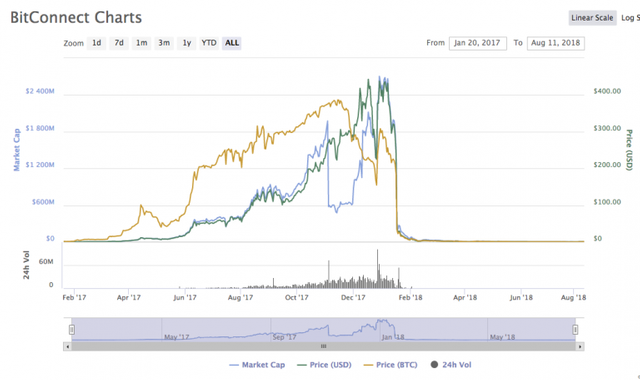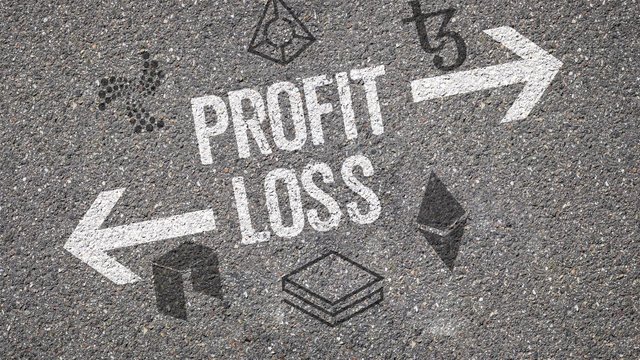How Profitable Are ICOs to Investors?
I originally published this research on Coined Times https://coinedtimes.com/how-profitable-are-icos-to-investors/
The spectacular rise of Bitcoin has made many investors excited about cryptocurrencies and hopeful that they can make similar gains by investing in Initial Coin Offerings (ICOs). This type of fundraising for blockchain startups has hit major headlines recently, and in many aspects overshadowed venture capital.
ICOs are not only used as a fast and regulatory-lax way of funding development. They are also used for distribution of tokens, as widely as possible. Achieving a network effect with decentralized distribution is not an easy task, especially with all the institutional players pouring in recently, attracted by the profits.
It’s difficult not to feel the fear of missing out when you look at the large gains. Nevertheless, just a small portion of people bought at ICO and sold at All-Time High (ATH) price. Moreover, many high ROI (Return of Investment) coins have seen large drops since the peak, some even below the ICO level.
Would $1 Invested in 2013 Have Made You Rich?
The first ever ICO was Mastercoin’s in 2013, but Next Coin (NXT), launched the same year, was by far the most successful for investors. If you had bought NXT at ICO price and sold at ATH price, your ROI would have been 12,857,043%!
$1 invested would have made you $128,570, while $1,000 would have made you a mind-blowing $128m!

2014 was dominated by Ethereum’s ICO. The decentralized software platform for smart contracts, DAOs, and Dapps, became the second most valued cryptocurrency in terms of the market cap, with ETH return of 460,633%, from ICO to ATH. It evolved into the most popular platform for creation of digital assets, as well as liquid cryptocurrency traded for those assets.
The winner of 2015 was Iota (MIOTA), which uses the directed acyclic graph (DAG) technology called ‘Tangle’ instead of the traditional blockchain, for feeless IoT micropayments. Its ROI, from the start of trading to ATH price ($5,69), was an astonishing 1,323,156%. Iota became one of the top performers in the digital currency space.
Augur (REP), a prediction market platform built on Ethereum, was launched the same year. Its ROI was 21,167% at the peak.
The average ROI of an ICO launched in 2015 is 26,070% as of press time, according to Coinist directory.
Note: Ethereum is included in these 2015 results.
Even though ICOs in the financial market sector raised the most money in 2016, this was actually a lucky year for investors in blockchain-as-a-service (BAAS) platforms.
A Chinese cryptocurrency and blockchain platform for Dapps, Neo, had an amazing return of 615,056% from ICO in 2016 to ATH. Other successful BAAS platforms, Stratis (STRAT) and LISK (LSK) had 319,821% and 52,545% ROI, respectively. That said, Neo, Stratis, and Lisk are currently down 90%, 93% and 92% since ATH.
A French project, Ark, which plans to connect all the different cryptocurrencies by acting as a blockchain switchboard, had ROI of 109,100% at ATH.
Despite that, 2016 was not all sugar and honey. There was a large number of fails, such as Arcade Token, which got delisted and is now inactive on Coin Market Cap. A similar thing happened to Mexican Bankcoin which dropped 99% since ICO. Let’s also not forget the fall of the most famous pyramid scheme, Bitconnect, with a billions-worth market cap at one point.

Compared to earlier years, a growing number of scams have decreased the average return of projects launched in 2016 to 635% as of press time, according to Coinist directory. However, the average ROI for the top 10 ICOs in 2016 is still high at 2,047.39%.
There was a stratospheric rise in popularity of ICOs in 2017, the year they went mainstream. Investors in many small offerings had large returns.
The anonymous team behind privacy-oriented Spectrecoin (XPEC) managed to raise only $20k for development. However, ICO investors, who held until its price peaked, had a 673,900% ROI. However, there was a drastic sell-off in 2018 due to the lack of expected development.
Some projects have raised amazing amounts, such as Filecoin (FIL), used as a decentralized storage solution. However, the $257 million they raised have not helped its ROI rise to astronomic heights.
2017 was a year when governance shortcomings of some of the blockchains became apparent. Cryptocurrencies which offered novel governance solutions, such as delegated proof-of-stake (DPOS), raised the most money.
Tezos (XTZ), the DPOS blockchain with innovative AI-helped governance, has raised $232m, $160m of which in just 32 hours. Due to a power struggle at the helm, delay of the launch, lawsuits and a surprise KYC requirement, there was a sell-off as soon as the tokens were claimed.
EOS, another delegated proof-of-stake smart-contract platform, has raised a staggering $4bn in a year-long Dutch-Auction-type ICO. It made it the most successful ICO to date. Although the price dipped due to governance issues after the launch, early backers could still collect some hefty gains. Those who bought at the price of $0.925 have around 500% ROI as of press time. On the other hand, those who bought at 10$ haven’t been so lucky, and would now sell at a loss.
The Swiss-based Sirin Labs (SRN) has raised $158m with an aim to build the first open source blockchain smartphone. There was 708% ROI from ICO to its peak price; however, its current price is much lower than the ICO price.
That said, the most profitable projects for investors seem to be those which raised 10x less money, but still enough for development. Some of them are Qtum with 36,503%, Storj with 34,678%, and Binance Coin (BNB) with 21,561% ROI from ICO to ATH.
Scams and Fails
2017 was also a year of numerous scams and fails, such as Centra ICO, whose founders claimed to be building a debit card for cryptocurrencies. They created fictional executives with impressive biographies and lied about partnerships with legitimate businesses. With the help of famous endorsers, including a boxer, Floyd Mayweather, they’ve managed to raise $32 million, while ICO investors lost all their money. SEC charged them with fraud in April this year.
Many other projects are down by over 99%, such as PlusCoin, Bolenum, and Crypto Tickets.
Due to many failed projects and scams, an average ROI of an ICO launched in 2017 is 50% as of press time, according to Coinist directory. The average ROI for the top 10 ICOs in 2017 is 2,297%.
By the end of 2017, we’d already had a couple of offerings per day, and their numbers are increasing. E.g. there were 20 different ICOs on July 1, 2018, but due to millions lost daily, people became wary of them.
The fact is that more money is being raised in 2018 than ever. However, the bear market, copycats, and a growing number of scammers are some of the reasons why average returns are diminishing. Investors have become more careful and selective.
Another trend is a rise in the number of institutional investors. Filecoin’s token sale raised a lot of money since it is regulatory-compliant and provides access to traditional investors.

ICOs have raised $6.3bn from January 2018 to March 2018. That is more than $5.7bn, the amount raised in the whole of 2017. Last year, the largest amounts were raised right after the bullish runs in spring and autumn. FOMO might have helped with that. Five projects raised over $50m in December of 2017. During the bull run of January 2018, ten projects raised over $50m, led by U.Cash ($113.65m). However, none of the ICOs raised that much during the crash in February.
The money flow has increased since then, with projects such as the gambling coin, Dragon (DRG), raising $407m in March. Although very profitable to founders, Dragon DRG has been bad luck to investors, whose bags have dropped 94% in value so far.
The money raised in earlier years is peanuts compared to the sums which are being raised now. Still, 56% of recent crypto startups have failed within 4 months of their ICO.
Large price drops have shown us that the amount of funds raised does not mean the project will turn out to be profitable for investors. Furthermore, some of the ICOs have been envisioned in the same way as pump & dump groups. Namely, pump & dump organizers and the inner circle (similar to ICO founders and some private pre-sale investors) profit from dumping on connected pump & dump groups, the so-called “outer rim”, and bagholders. In the case of ICO, these are late backers and buyers on exchanges.
Among all the Ponzi schemes, exit scams or overenthusiastic but incapable teams, it is difficult to find a good project. This doesn’t mean that we should dismiss ICOs altogether.
Among the 2018 ICOs, there are some that survived their first day on an exchange, aka the “drop it like it’s hot” moment, and provided returns to investors.
For example, investors in the ICO of Zilliqa (ZIL), which scales through sharding of the mining network, have 850% ROI so far.
So yes, ICOs can be profitable. The situation is also likely to improve for many of the mentioned coins when we get out of the bear market. However, the amount of risk is astonishing. Extreme profits can only come with extreme risks. According to Satis Group, 92% of coins are scams, fails or have gone dead. 2.8% are gradually diminishing and only 5.4% are successful or promising. Many among that 5.4 % will probably fail too.
Looking for a winner is not easy. ICOs are a type of democratized venture capital, but instead of using safer VC models such as milestone financing with checks and balances of milestones reached, the trend is to raise money in the pre-product phase. If you want to invest in one, note that you are actually investing at the riskiest phase of a startup. There’s no guarantee that there will be a product or a functioning right or utility for your token. On top of that, there is a risk of a regulatory crackdown. Speculators or those who get disappointed before the ICO end usually sell on the first day of listing. If those coins reach an exchange at all, that is, as only 8% of the tokens get listed.
That said, there are genuine new projects out there. They are constantly trying to improve on scalability, governance, security, transaction fees, speed, and user experience. Blockchain technology is in its early stages and this means that the “winner” might be an existing product which evolves. It could also be one that hasn’t even been born yet.
Do your own research. Invest only what you can afford to lose. Look for the experienced and vetted developers, with a proven record of using funds adequately to generate value.
Make sure you also consider proven coins, like Bitcoin (BTC), which didn’t hold an ICO. Bitcoin went from $0.003 in its first transaction in 2010, to $6,000 support in 2018. It has grown 2,000,000 times in the last 7 years.
Conversely, if you are risk-averse, you can always invest in S&P, with an average return of ≈10%.
Note: I have ignored the first 2-3 days of trading when calculating All-Time-High, considering that those days can be exceptionally volatile.